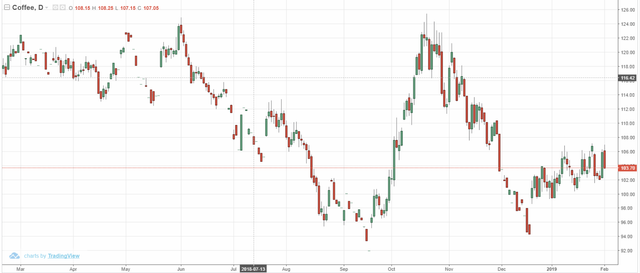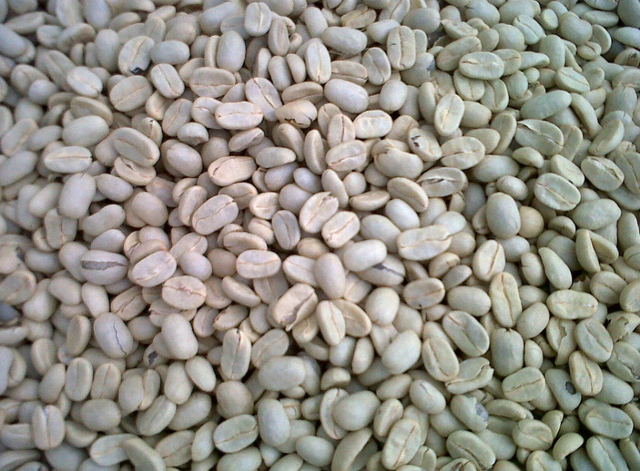Selling and exporting green coffee
As we know, the overwhelming majority of coffee producers are small farmers, but you would be surprised to see how many of them can tell you the current price of green coffee on the futures market in New York, especially during the months of harvest time. The future market works like making a promise to sell coffee at a fixed price at a specific date. Bad weather in Brazil will rise that price and an expected huge production, in say Vietnam, will drop it.
The price is also influenced by the amount of strategic inventories of the big processing companies and pure speculation. These strategic inventories are the reason that consumer prices are quite stable, although you only see prices go up and almost never down (they just pocket the gains).

But back to the producers! Harvest is only once a year but farm maintenance has to be paid throughout the year. Small farmers take loans from intermediaries or directly from local processing and exporting companies (that can be owned by big producers, cooperatives or international coffee trading businesses). Often those loans are related to the current local price of coffee (which itself is related to the future’s price of coffee at the time of harvest minus a discount). Of course, prices at harvest time are nearly always at its low.
Most farmers need those loans, especially during harvest (labor costs are quite high because the coffee has to be handpicked). Although prices generally are a bit low at harvest time, the fact that the price is related to the American dollar gives them a kind of security, a protection against inflation. This probably is one of the main reasons (besides tradition and the alternative costs of changing to another crop) that small farmers keep producing coffee (even against a loss); it’s a cash crop paid in relation with a relatively stable currency. As such, it is part of their survival strategy.
Big producers and cooperatives will try to do the same as the big (international) coffee exporters and get a bigger piece of the cake. The will have to unite at least some 46,000 pounds or 21,000 kg of green coffee to fill one container (which is often the contract quantity), and preferably two or three times that. Depending on the country of origin of the coffee, the coffees will trade at a premium (a few cents more per pound), at par, or at a discount (a few cents less per pound). In the U.S. coffee futures are traded on the Intercontinental Exchange (ICE) or formerly called the New York Board of Trade (NYBOT).

See for example: https://www.theice.com/products/15/Coffee-C-Futures. For prices go to their data page.
Arabica from for example Brazil and Uganda nearly always trade at a discount, as Colombia mostly trades at a premium. Central American coffees go up and down. Over the last years Honduran coffee used to trade at a discount but is now trading at par, Nicaraguan coffee used to trade at a premium but is back at par at the moment.
Establishing these future contracts is a way for producers to hedge against price drops and a hedge against prices rising a lot for importers. As trading on the future’s markets is anonymous, the big producers and cooperatives will try to contact importers directly to try to negotiate prices and establish durable relationships. This is called “direct trade” which means taking out the intermediaries and importer thus increasing transparency, traceability and negotiation positions. So basically this is good for everyone, right?
International traders (importers and exporters) and roasters know the risks and deal with them logically and mathematically, although even at those levels there have been cases of big speculations going wrong. Big producers and cooperatives need specialized personal to do this kind of trading, and they have to understand the risks and control their personal. The biggest enemy in this game is GREED. In another article we will see why and how.
Previous article from coffee series you can find under tag #cafescope.
You can see them all here.
Article was also published on Cafescope
This post has received a 3.13 % upvote from @drotto thanks to: @sbi-booster.